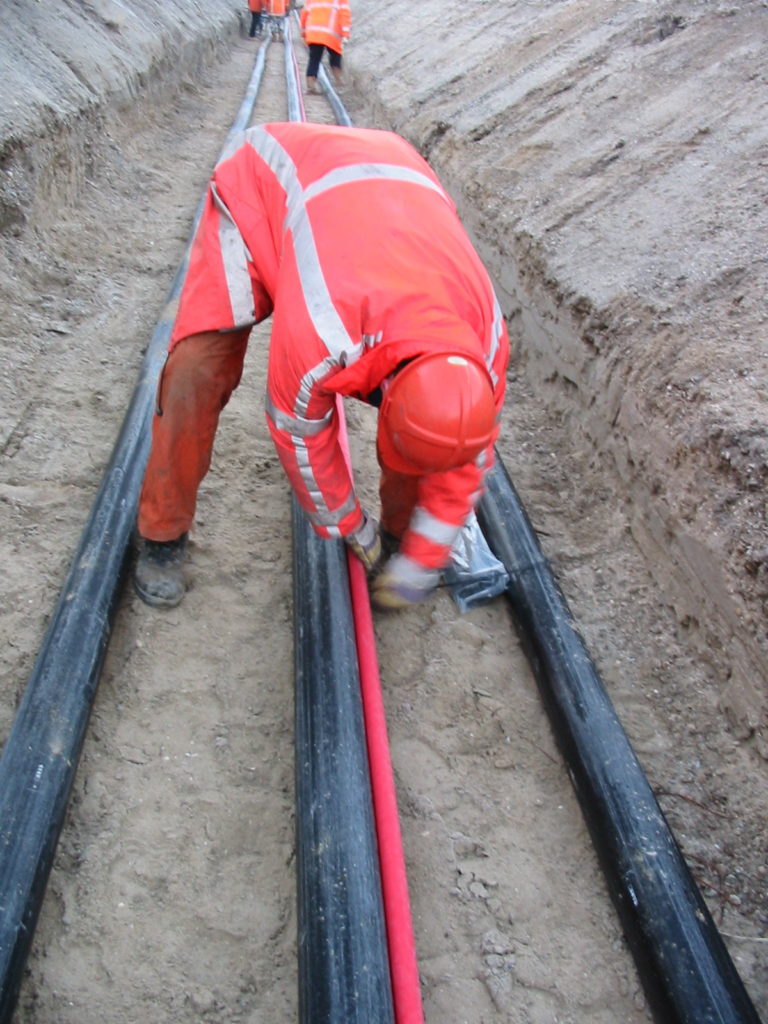AQUIND Interconnector will include four high-voltage direct current underground cables on either side of the Channel, connecting the landing points to new converter stations in Lovedean (England) and Barnabos (France).
The Underground Cable Route
Four high-voltage direct current underground cables will connect the subsea cables from the landing point at Eastney to a new converter station at Lovedean in Hampshire – a distance of less than 20km.
An underground data cable will also be required to maintain the interconnector and facilitate communications between the UK and France. The underground data cable will be installed alongside the underground electric cables.
The proposed underground cable route was arrived at via a detailed optioneering process reviewing all types of constraints, including:
- Environmental – such as proximity to protected areas or habitats of protected species,
- Cultural / heritage features
- Engineering factors – such as existing utilities / infrastructure buried under motorways
- Land ownership constraints
The underground cables will be buried under existing verges or highways, where possible. The exact methods to be used for underground cable installation will depend on the final underground cable route. A typical underground cable installation will involve trench excavation, installing ducts and reinstating the road. The underground cable can then be pulled through the ducts at a later date, to reduce the extent of traffic management. Appropriate traffic mitigation measures will be put in place before the start of any construction work.
The converter station will be connected via underground high-voltage AC cables to the UK electricity grid at the existing Lovedean substation, which is owned and operated by National Grid.

